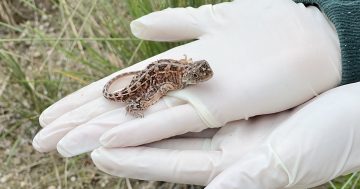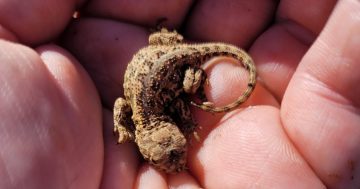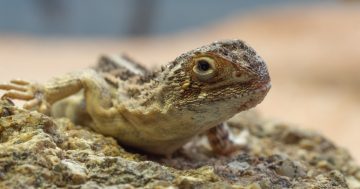The UC Monitor informs us that they’ve pulled in funding to look at why earless dragons are becoming endangered:
A team of researchers led by Professor Stephen Sarre was granted $395,000 to identify the reasons that have made species like the grassland earless dragon endangered or vulnerable, as well as to develop tools to prevent the extinction of this and other reptiles.
The Australian Research Council linkage project grant will fund the four year study aiming to save this tiny, stunningly patterned lizard from the brink of extinction in the ACT and the surrounding region.
In addition, the ACT government has also committed $304,000 to this project.
















